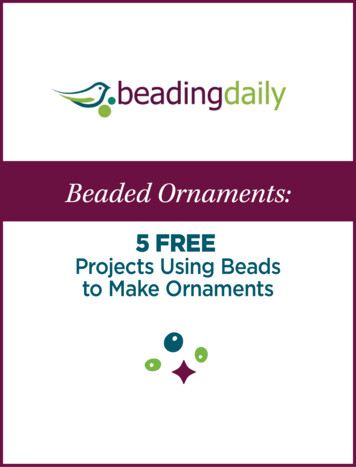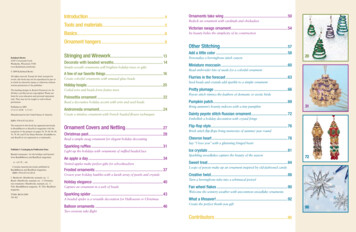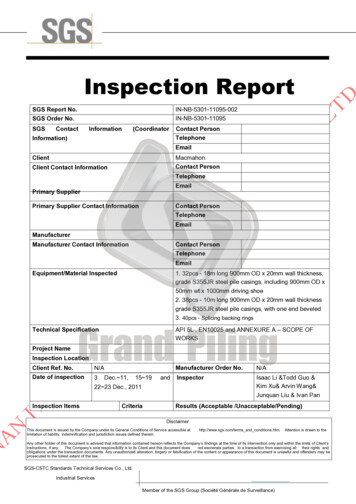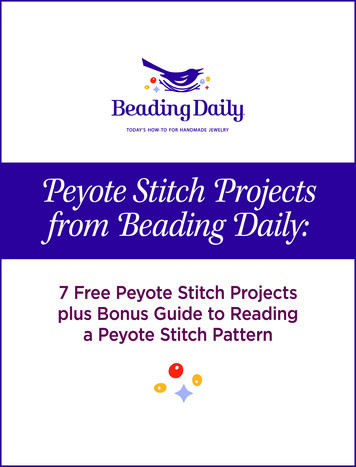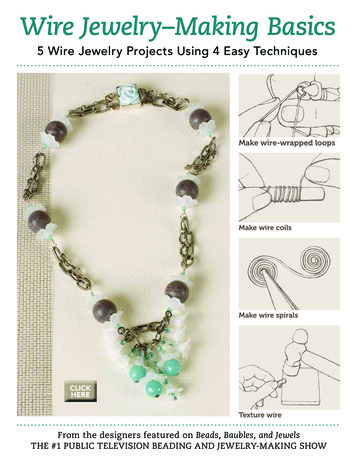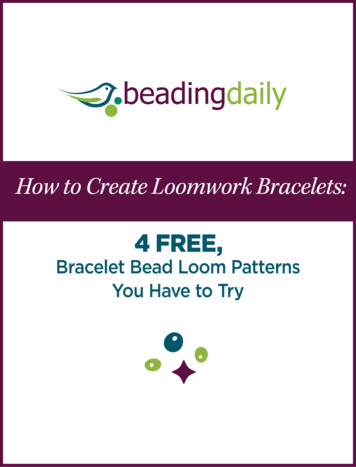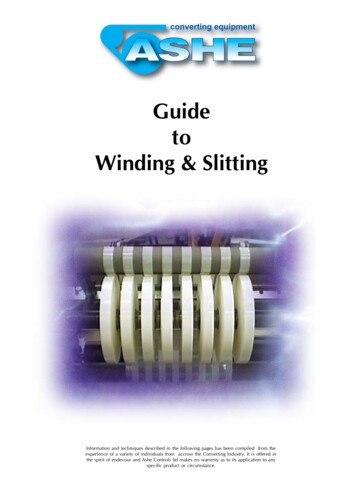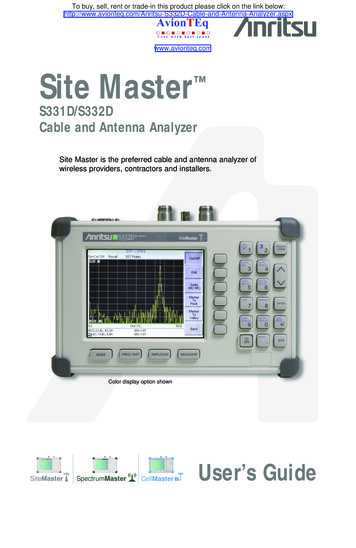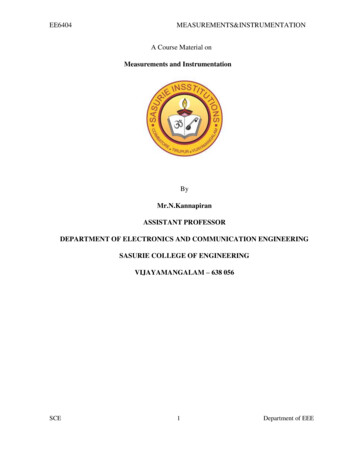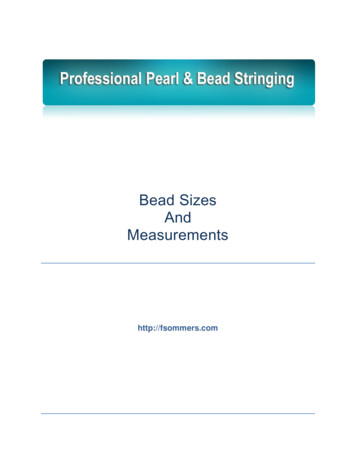
Transcription
Bead SizesAndMeasurementshttp://fsommers.com
IntroductionBeads are obviously the basis of making jewelry in the pearl and bead stringingniche.And, although we may have a deep familiarity with beads, we are all sometimesasked questions about beads and their size and measurements where the answersmay not be at our fingertips. A client may want to know how many millimeters arein an inch, for example. I know I’d need to look that up.In another example, you may be planning a piece of jewelry and need to know thenumber of beads you’ll need for a design element. This may involve an inches tomillimeters calculation for a specific millimeter size. Again, I’d have to look it up.While the answers to these types of questions are readily available on the web andelsewhere, it seemed to be a good idea to pull together some critical referencematerials for easy access.Some of the following may be familiar to you. Some of it may not. My hope is thatyou’ll find it useful.For questions or comments, please e-mail fleury@fsommers.comFleury Sommers
Sizes of BeadsBeads are measured in millimeters and they are described in millimeters so it’simportant to understand millimeters.One inch equals 25.4 millimeters. So, to convert inches to millimeters, multiplyinches by 25.4. To convert to inches, multiply millimeters by 0.03937. (Onemillimeter equals 0.03937 inches.)Here is how millimeters compare with inches. You can see that a 20 millimeterbead, a large bead, for example, is just over ¾ of an inch or more precisely .0.7874015748031497 inches.
Here is a chart of standard bead sizes and their corresponding size in inches.
Bead Sizes - VisualHere is an image of typical bead sizes. Please note that the image is approximate,however, it will give you a sense of the sizes of the beads that we typically use.
Measuring More PreciselyApart from knowing how to calculate inches and millimeters, professional pearland bead stringers must know how to measure beads.The trade uses a variety of gauges to measure beads and faceted stones. And, thereare a number of very expensive and very precise gauges available.However, the most versatile and most widely used is the inexpensive sliding brassgauge, pictured below.
As illustrated, the gauge will give measurements in millimeters and in inches. Thebottom row of the gauge provides measurements in millimeters while the topprovides measurements in inches.To use the gauge, place your thumb on the knob to slide the gauge open andcapture the bead between the jaws. When the gemstone is firmly within the jaws,you can read the measurement. In the picture above, the jaws are opened at 3 mm.It’s important to know that with many gemstones you’ll have two measurements.That’s because not every bead is perfectly round. Pearls, for example, are generallyoff-round.This means the size of their diameter and length will differ. When you measurepearls first measure its diameter and then its length. Express the size in this way,for example, 8-8 ½ millimeters.When you are first starting out, it’s especially useful to carry a gauge with you tomeasure beads you’re considering purchasing. This will help you develop a visualmemory so eventually you’ll know the size of the bead just by looking at it.But however good your visual memory, always measure beads before selling apiece of jewelry. All of us make mistakes and want to avoid the embarrassment ofmislabeling beads.
Beads per InchBeads are usually bought by the strand or by the hank. The strands are usually 16”long, although in today’s environment, many dealers are shorting strands, so besure to know the length of the strand you are buying. A general formula fordetermining necklace length is to add an inch for knots and the clasp. Using thisformula, then, a sixteen inch strand will become a seventeen inch choker aftermanufacture.Obviously, there are flaws in this general construction. Thread size, knot tightness,and size of clasp can affect the final length of a piece of jewelry. However, don’tdiscount the formula entirely. It’s an excellent starting point.There are occasions when you’ll want to have a fairly precise idea of the number ofbeads you’ll need for a piece. The following chart, created by Stuller’s, a very finewholesale company, is as good as any I’ve seen. However, again bear in mind thatlengths can vary depending upon thread size, knot tightness and clasp length.
Standard LengthsAlthough you are probably manufacturing art jewelry or custom jewelry asopposed to commercial jewelry, you’ll want to know the standard lengths andnomenclature for jewelry.Please note that although the standard length for a choker is 16”, this is too shortfor most women.Similarly, 7” is considered standard for bracelets. This is too short for manywomen.If you’re making a piece for a client, be sure to measure.
bead, a large bead, for example, is just over ¾ of an inch or more precisely . 0.7874015748031497 inches. Here is a chart of standard bead sizes and their corresponding size in inches. Bead Sizes - Visual Here is an image of ty
